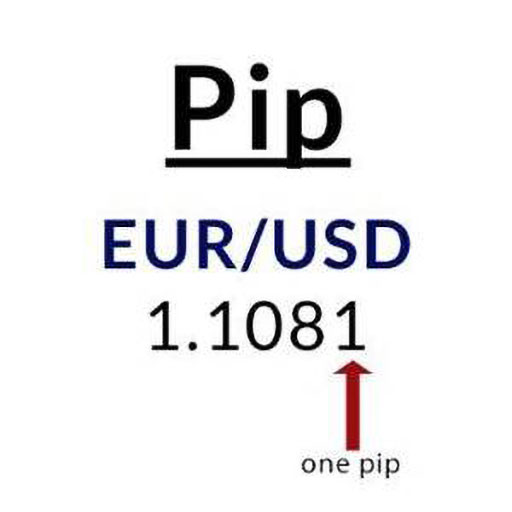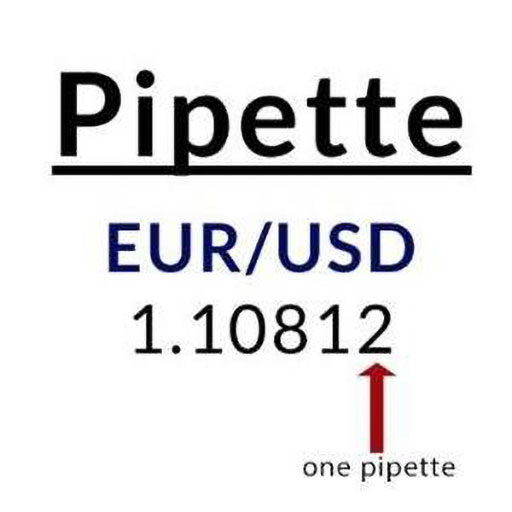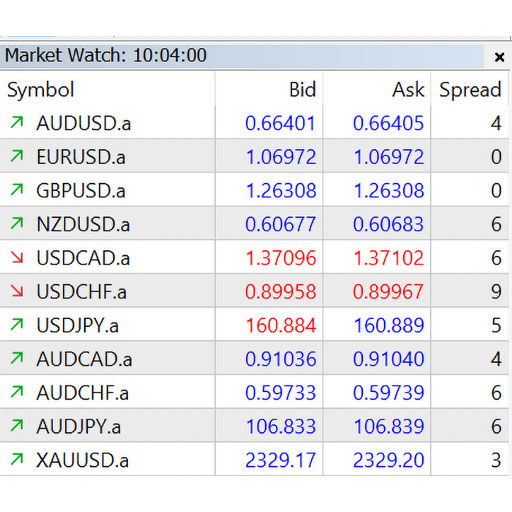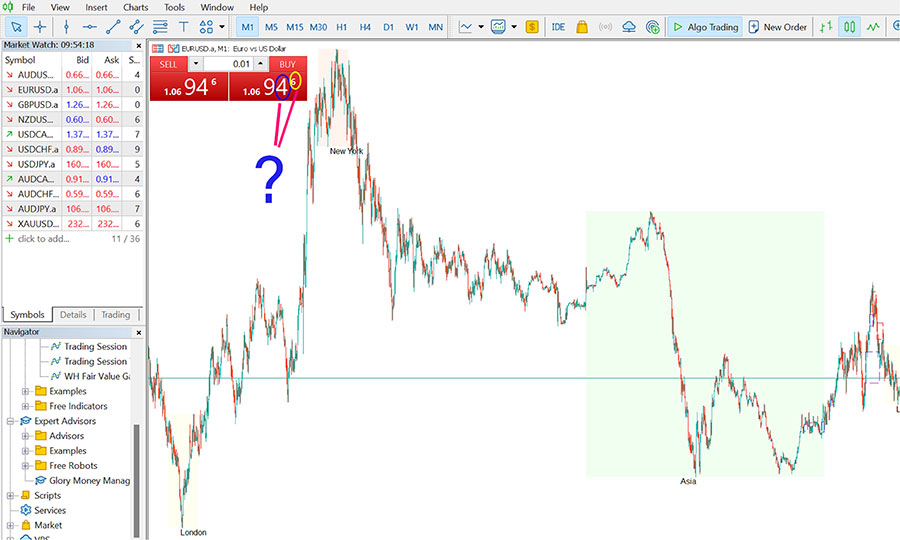In the world of Forex trading, understanding the smallest units of price movement is crucial. These units, known as pips and pipettes, play a vital role in measuring profit, loss, and overall trading performance. Choosing the right broker for forex trading is essential for effective trading. This comprehensive guide will explain what pips and pipettes are, how they are used, and why they are important in Forex trading.

What is a Pip?
Definition
A pip, which stands for “percentage in point” or “price interest point,” is the smallest price movement that can be observed in a Forex quote. In most currency pairs, a pip represents a movement in the fourth decimal place (0.0001). This small increment might seem insignificant, but it is the fundamental unit of measurement in Forex trading, allowing traders to calculate price changes, profits, and losses.

Standard Pip Value
For most currency pairs, a pip is equivalent to 0.0001. This standardization allows traders to easily calculate profit, loss, and risk. For example, in the EUR/USD currency pair, a movement from 1.2000 to 1.2001 represents a one-pip change. This consistency in measurement helps traders to compare price movements across different currency pairs effectively.
Exceptions
For currency pairs involving the Japanese Yen (JPY), a pip is typically represented by a movement in the second decimal place (0.01). This is because the Yen has a much lower value compared to other major currencies. For example, in the USD/JPY pair, a movement from 110.00 to 110.01 represents a one-pip change. Understanding these exceptions is crucial for accurate calculation and risk management in Forex trading.
How to Calculate Pip Value?
The value of a pip is determined by the exchange rate and the size of the trade. Here’s a step-by-step example:
- Identify the Currency Pair: Let’s use EUR/USD with an exchange rate of 1.2000.
- Determine the Trade Size: Assume a standard lot size of 100,000 units.
- Calculate the Pip Value: For EUR/USD, 1 pip (0.0001) in a standard lot is $10.
Example Calculation:
- If the EUR/USD moves from 1.2000 to 1.2001, that is a 1 pip movement.
- For a standard lot of 100,000 units, the pip value is calculated as 100,000 x 0.0001 = $10.
For JPY pairs, the calculation is slightly different due to the 0.01 pip value.
Example Calculation (USD/JPY):
- If USD/JPY moves from 110.00 to 110.01, that is a 1 pip movement.
- For a standard lot of 100,000 units, the pip value is calculated as 100,000 x 0.01 = 1,000 JPY, which needs to be converted to USD. If the exchange rate is 110, the pip value in USD is 1,000 JPY / 110 = $9.09.
Read More: What Is the Spread in Forex and How do you Calculate It ?
Calculating Pip Value in Different Lot Sizes
Forex trading can be conducted in different lot sizes, such as micro, mini, and standard lots. A standard lot is 100,000 units, a mini lot is 10,000 units, and a micro lot is 1,000 units. The pip value changes accordingly based on the lot size.
Example Calculation for Mini Lot (EUR/USD):
- If the EUR/USD moves from 1.2000 to 1.2001, that is a 1 pip movement.
- For a mini lot of 10,000 units, the pip value is calculated as 10,000 x 0.0001 = $1.
Example Calculation for Micro Lot (EUR/USD):
- If the EUR/USD moves from 1.2000 to 1.2001, that is a 1 pip movement.
- For a micro lot of 1,000 units, the pip value is calculated as 1,000 x 0.0001 = $0.10.
What is a Pipette?
Definition
A pipette is a fractional pip, representing one-tenth of a pip. It allows for more precise measurement of price movements and is typically shown in the fifth decimal place (0.00001) for most currency pairs and the third decimal place (0.001) for JPY pairs. This level of precision is especially useful in high-frequency trading and when dealing with tight spreads.

Value
A pipette is usually valued at 0.00001 for most currency pairs and 0.001 for JPY pairs. While a pip is the standard measure, pipettes provide an additional layer of granularity. This increased precision can be beneficial in scenarios where even the smallest price movements can have significant implications on trading outcomes.
Use by Forex Brokers
Forex brokers use pipettes to offer tighter spreads and more precise pricing. This increased precision can be beneficial for scalpers and high-frequency traders who rely on small price movements. By using pipettes, brokers can attract traders looking for the most competitive pricing and enhance their trading strategies with more detailed price information.
Read More: Forex Terminology for Beginners
The Importance of Pips and Pipettes
Measuring Profit and Loss
Pips and pipettes are essential for calculating profits and losses in Forex trading. Every price movement in the currency pair is measured in pips, allowing traders to determine their gains or losses accurately. For instance, if a trader buys EUR/USD at 1.2000 and sells at 1.2010, they have gained 10 pips. If trading a standard lot, this equates to a profit of $100.
Calculating Risk Management
Effective risk management in Forex trading often involves setting stop-loss and take-profit orders based on pip movements. Understanding pip values helps traders to set these levels appropriately, protecting their investments and optimizing their risk-reward ratios. For example, if a trader sets a stop-loss order 50 pips below the entry point and a take-profit order 100 pips above, they have a risk-reward ratio of 1:2.
Comparing Transaction Costs
Forex brokers charge commissions and spreads in terms of pips. By comparing the pip spreads offered by different brokers, traders can evaluate transaction costs and choose the most cost-effective options for their trading strategies. A broker offering a spread of 1 pip on EUR/USD is more cost-effective than one offering a spread of 3 pips, particularly for high-frequency traders.
Real World Example of Transaction Costs
Consider two brokers: Broker A offers a spread of 1 pip on EUR/USD, while Broker B offers a spread of 3 pips. If a trader executes 100 trades per month, the cost difference can be substantial.
Calculation:
- Broker A: 100 trades x 1 pip x $10 (standard lot) = $1,000.
- Broker B: 100 trades x 3 pips x $10 (standard lot) = $3,000.
The trader saves $2,000 in transaction costs by choosing Broker A over Broker B.
Trading Platforms and Pip/Pipette Display
Understanding Platform Quotation Settings
Different trading platforms may display quotes differently, showing either four or five decimal places for most currency pairs (or two or three for JPY pairs). Understanding how your platform displays these values is crucial for accurate trading. For example, a quote of 1.20005 on EUR/USD shows five decimal places, indicating the presence of pipettes.
Read More: Margin in Forex: A Comprehensive Guide
How to View Pip/Pipette Values
To view pip and pipette values on your trading platform:
- Check the Quote Display: Most platforms allow customization of how quotes are displayed.
- Adjust Settings: Ensure that the settings match your preference for viewing pip or pipette values.
- Use Platform Tools: Many platforms offer tools and indicators to help visualize pip movements and calculate their values.
Examples of Popular Trading Platforms
MetaTrader 4 (MT4):
- MT4 typically displays quotes in four decimal places for most currency pairs.
- Users can add indicators to visualize pip values and set alerts based on pip movements.

MetaTrader 5 (MT5):
- MT5 offers more advanced features and typically displays quotes in five decimal places for more precise pricing.
- Traders can customize the display settings and use advanced charting tools to analyze pip movements.
cTrader:
- cTrader provides a highly customizable interface with options to display quotes in either four or five decimal places.
- The platform includes various tools for calculating pip values and setting trading parameters based on pip movements.

Conclusion
Understanding pips and pipettes is fundamental for anyone involved in Forex trading. These small units of price movement are the building blocks of the trading environment, allowing traders to measure profit and loss, manage risk, and evaluate transaction costs with precision.
A pip, typically representing a movement in the fourth decimal place for most currency pairs, and a pipette, a fractional pip providing even finer detail, are essential for accurate and effective trading strategies. Whether you are calculating potential profits, setting stop-loss and take-profit levels, or comparing broker spreads, knowing how to work with pips and pipettes can make a significant difference in your trading outcomes.
Additionally, the use of pips and pipettes extends beyond basic trading calculations to influence the functionality of trading platforms, the development of algorithmic trading strategies, and the overall assessment of market conditions. By mastering these concepts, traders can enhance their decision-making processes, optimize their risk management practices, and improve their overall trading performance.
As you engage in Forex trading, always consider the impact of pip and pipette values on your trades, and use the tools and features available on your trading platform to monitor and analyze these critical metrics. With this knowledge, you can navigate the complexities of the Forex market more effectively and achieve greater success in your trading endeavors.
Reference: +
What is the difference between a pip and a pipette in Forex?
A pip is the standard unit of measurement for price movements in Forex, typically represented by the fourth decimal place (0.0001) for most currency pairs. A pipette is a fractional pip, one-tenth of a pip, shown in the fifth decimal place (0.00001).
Why do some Forex brokers use pipettes?
Forex brokers use pipettes to offer more precise pricing and tighter spreads. This can benefit traders who rely on small price movements, such as scalpers and high-frequency traders.
How do pip values differ between currency pairs?
Pip values differ based on the currency pair and the current exchange rate. For most pairs, a pip is 0.0001, while for JPY pairs, it is 0.01. The actual monetary value of a pip depends on the trade size and the exchange rate.
How do pip values impact leveraged trading?
In leveraged trading, small pip movements can result in significant gains or losses due to the amplification effect of leverage. For example, if a trader uses 100:1 leverage, a 1 pip movement in EUR/USD with a standard lot size can result in a $1,000 change in account value. Understanding pip values is essential for managing risk and avoiding large losses.
Can pip values affect algorithmic trading strategies?
Yes, pip values are crucial for algorithmic trading strategies that rely on precise price movements. Algorithms use pip values to execute trades, set stop-loss and take-profit levels, and manage risk. Accurate pip calculation ensures that the algorithm performs optimally and achieves the desired trading outcomes.
Are pip and pipette values consistent across all brokers?
While the basic definition of pips and pipettes is consistent, the way brokers display and handle these values can vary. Some brokers may round prices differently or use different decimal places in their quotes. It is essential for traders to understand their broker’s specific practices to ensure accurate calculations and trading decisions.







